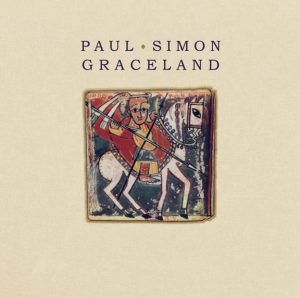
BY NECDET BALKIR GÖKA (ME/IV) balkir.goka@ug.bilkent.edu.tr
Paul Simon’s seventh studio album, “Graceland,” is like a walkway through South Africa. The sounds used in the album are so fascinating that you find yourself imagining that you are a part of an a cappella chorus, singing alongside African musicians. And that is the idea behind “Graceland.”
After having released numerous successful albums as half of the legendary folk-rock duo Simon and Garfunkel, Simon’s relationship with his counterpart Art Garfunkel had come to an end. His marriage had also fallen apart, and his most recent studio album, “Hearts and Bones,” was a commercial disaster. In short, his life had gone to pieces. But then he listened to a bootleg cassette of South African township music, and decided to go to Johannesburg to record some demos with South African musicians. This was a turning point for Simon’s career, because he used those recordings to create “Graceland,” which would turn out to be his most successful album and indeed one of the most iconic albums of all time.

South African music is a unique genre on its own. The rhythms, chord progressions and vocal lines used are all different from those employed in pop music. Taking these elements, synthesizing them with Western music and creating pop music from this combination shows Simon’s musical ability. Two of the best-known South African musical styles that Simon used on the album are isicathamiya and mbaqanga.
Isicathamiya features a technique known in Western music as “a cappella”: without instrumental accompaniment. In an a cappella band, the human voice is used as an instrument; members form groups according to their vocal ranges, and every group corresponds to a musical instrument in a regular rock band. With each group singing a different melody, the music is three-dimensional, despite the lack of instrumental accompaniment. (This technique is also very difficult; it is hard to maintain your own line while listening to others singing different patterns, since the human brain tends to make a person sing what he hears.)
The other style, mbaqanga, is very energetic; this is because of the bass line. The bass guitar is an essential element in all rock bands. But the usage of the bass guitar in mbaqanga and Western music is different. In Western pop music, the bass guitar is used to fill in the background and support the drumbeats and lead guitars. However, many people claim that they cannot distinguish the bass guitar line due to its low pitch, which makes it hard to hear with the relatively high-pitched lead instruments playing over it. The difference in mbaqanga is that it is possible to hear the bass guitar because in this genre it functions as a lead instrument. It not only creates the foundation of the song, but also makes it more rhythmic. Here, the electric guitar is used to fill in the background and add flavor to the song.
It is clear that Simon recognized all these unique elements in South African music and used them in “Graceland.” The album’s opening song, “The Boy in the Bubble,” is a great example of the way Simon synthesized South African elements with pop music. As in mbaqanga, the bass guitar is the lead instrument; all the others are supporting elements. The songs “Diamonds on the Soles on Her Shoes” and “Homeless” are examples of isicathamiya. There are no instruments in these songs, just an a cappella group, with Simon as the lead singer in “Diamonds.” Interestingly, throughout the album, the accordion is used extensively, as both a lead and a rhythmic instrument. This supports the energetic, positive emotion of “Graceland.”
It is remarkable that after a period of depression, Simon was somehow able to release a masterpiece that ended up winning a Grammy for album of the year and has remained influential ever since, making the top 100 in numerous publications’ lists of the greatest albums ever. Many critics would agree that every music lover should add this album to their archive, since it offers a unique experience to listeners and enables them to discover the music of South Africa.
